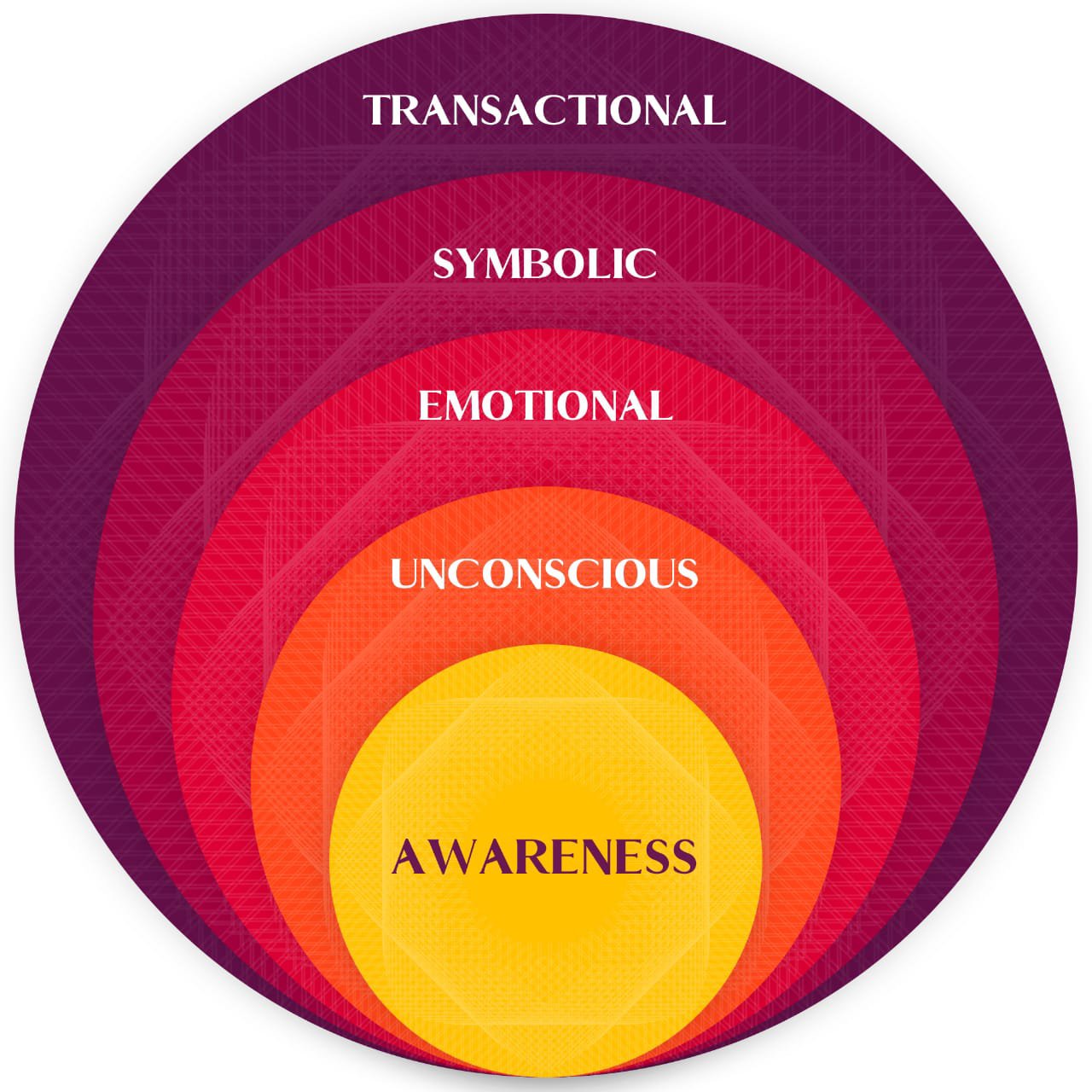Have you ever been at a loss of words to express what you felt? I first developed the five circles to explain the inner journey many years ago in an online course I did for a year with Shwetaa Shah. I have used it in many places since then.

- The Transactional world is the world we live in ordinarily. A world where sentences are taken literally, and we make promises we can keep and enter into contracts etc. In this world, we think logically and express ourselves in correct syntax. (Logic, Syntax)
- The symbolic world is the world where poets use words to craft experiences and painters paint pictures that represent things that we don’t always have words to express. Its a world where metaphor and symbols reign. Often using two words close to each other in a text is more important than what the sentence means syntactically.
- The emotional world is often beyond words, experiences/feelings that are intense and leave us at a loss for words. In this world it is hard to adequately represent something, even symbolically. Often there is only one thing to do, to be Present and to allow ourselves to FEEL, knowing any form of experience will always take away something from it.
- The unconscious represents things things that we are not even fully aware of, information we process before it even reaches our awareness. The simplest form of this is a strange sense of a presence in the room when there is no one there. Another example is that of Dichotic Hearing. Our intuitions and hunches often originate at this level and then bubble up to our conscious awareness through the subsequent layers. This is why it is so difficult to understand the logic behind our intuition. Yet we can learn to understand it and trust it.
- Pure Awareness: At the centre of it all lies pure awareness, the cogito in Descarte’s famous dictum. This is an outward looking awareness. Even an image seen in the mirror is seen as yet another visual object and not as the self. The unconscious realm lies beneath this too. But this is the bedrock, the foundation of consciousness.
The only thing to add is that the boundary lines between each circle is made of anxiety (fear). What this means is that in order to go from one level to another we have to go through anxiety.
To understand more about the epistemology behind this, read this paper on Gestalts.
Applications
Applications:
- Therapy: Those who have worked in the therapeutic setting can clearly distinguish these different layers. If the goal of therapy is an integrated person, then the therapist helps the client go through different layers, with an attitude of what Carl Rogers calls Unconditional Positive Regard. When the client learns to adopt the right attitude to understanding oneself at all levels, it leads to a person being more integrated. The initial part of this conceptual map was created during my work with Schizophrenia
- Meditation: Practitioners of meditation experience the journey through these different levels of consciousness. One could even say that it is the purpose of meditation.
- However, it is interesting to note that when speaking of metaphysics (the nature of things), it is often described inside out. The innermost realm of pure consciousness or awareness is considered primordial, in the sense that it exists first. Let’s say it is what a baby is born with. The rest of the layers are things that we develop over time.
- Creativity: Understanding creativity requires an understanding of the five circles. It also involves understanding and facilitating the movement between them. The easier it is to traverse between the circles the easier it is to access our creativity
- Productivity: Anyone who has access to only the outer circle may well be a great manager, able to manage everything logically, allocating time and resources to get the job done. But she would still be using only a small part of the resources that could be available to her.